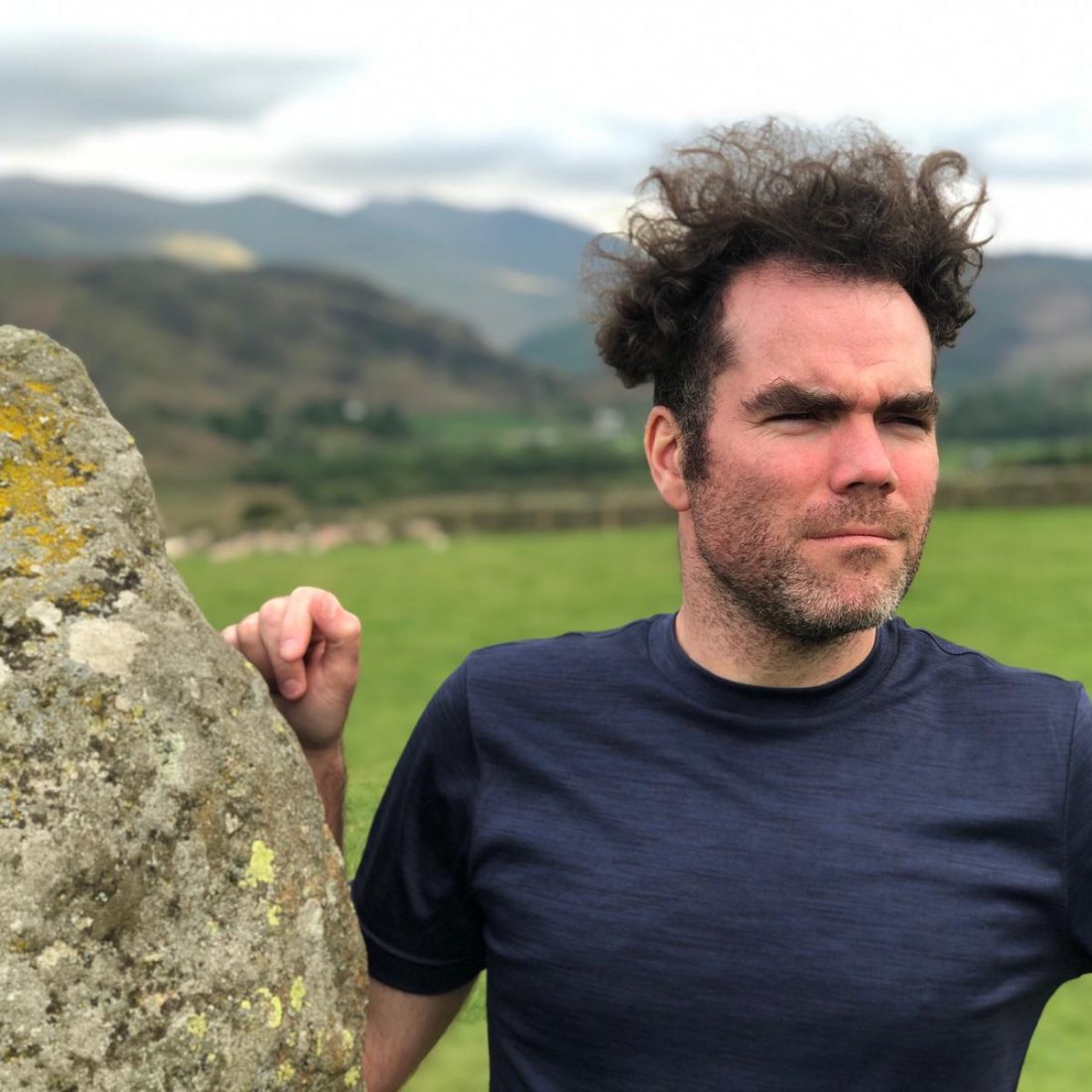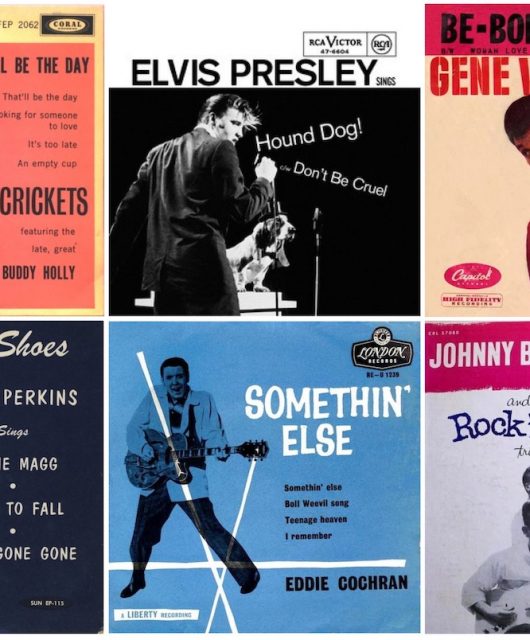Bopflix has been providing the online video-hungry public with musical treats for more than a decade. Julie Burns sat down with founder Chris Magee to talk about the internet’s most rockin’ channel…
Thanks to the relentless innovation of the digital age, these days there are many more ways to enjoy music. Equal and opposite to traditional vinyl is the wonderful world of online video and Bopflix is one of the coolest standouts amongst an explosion of dedicated digital music channels. Created as an independent broadcasting and media production company, it curates music videos, live events, promos and documentaries.
Specialising in roots music and lifestyle subcultures – mainly rock’n’roll, rockabilly, rhythm and blues, western swing, country and doo-wop – the channel’s remit is to be a one-stop repository for hot sounds. Available through YouTube, Facebook and Vimeo, Bopflix provides access to all the latest and greatest in international music events and must-see revivalist band sessions. Celebrating 10 years at the helm of this popular platform, innovative filmmaker Chris Magee offered his insight to Vintage Rock…
Congratulations on the success of Bopflix and its ever-increasing viewing figures…
It’s pretty amazing. In 2018, there were 10,000 subscribers; in 2019, 20,000; now it’s approaching 25,000. Starting out in the late 2000s, the channel took years to build up. YouTube was a bit of a battlefield, a Wild West saturated with stuff, so it’s taken a long time to attract attention amongst the noise. But there was a niche waiting to be filled. When I started filming the scene, hardly anyone was doing it, and there was a suspicion about it. It took time to build up people’s trust. No one wanted to be on camera in case they were made a fool of. This was because, in previous years, the sort of filming done by news-based or mainstream media often led to misrepresentation. I was always a fan of roots music (as well as a musician), so was coming at it from the inside, while on the outside, I had an interest in video and TV. When I got into the rockin’ club scene in the 90s, there was no internet. Later on, rockabilly and rock’n’roll videos began to pop up that I felt were predominantly bad representations.
Various camera people would capture events with a preconceived idea – as if they were trying to keep a parody going. Instead of sincerely reflecting clubs, festivals and events, there was a bit of mockery about it. From my perspective, I always wanted to ‘sell’ the scene to people, to show them the cool side.
As a rock’n’roll fan first and foremost, why did you decide to branch Bopflix out into other musical genres?
Predominantly, it is a roots and rock’n’roll music channel, but at the same time, it’s also about breaking down barriers. It covers the 40s, with interesting jazz and R&B, as well as 60s surf and frat, and onwards into garage and punk. If it were ‘only’ a rockabilly channel, that would be fine – but limiting. I wanted to make it a whole hub to connect music fans, like a quick gateway into a real breadth of connected genres and subgenres.
How did your background lead to the concept of creating such a channel?
As a teenager in the mid-90s, I started going out to clubs, and have been ever since. I used to be in bands myself – the country/rockabilly Kansas City Cryers to, more recently, The Quantums. For some time, I was juggling being in a band with doing film stuff on the side as a hobby. I later started working at Sky News as a picture researcher, before joining the Sky One creative team. In my own time, I started messing about with cameras and editing little live clips at home, until I eventually got the attention of some bands and promoters in need of videos. This built up so that in 2010, I left the day job. I’m mostly self-taught… lots of trial and error!
What advantages does being featured on Bopflix bring to artists?
I would hope it provides a useful service in breaking new bands, by granting an international platform. As the audience is widening, more artists are coming onboard, which then prompts the promoters’ interest and opens up bands’ opportunities for gigging and touring. It’s nice to hear positive feedback from acts that it’s a good platform for them. Three or four years ago, the sessions were only a sideline, now they’re a mainline of the channel. At any one time, there’s around 650 videos on Bopflix, 400 of which are sessions. The rest are promos or documentary-type material, plus I have some videos hosted on third-party channels: a great example is the Swiss band Hillbilly Moon Explosion, available to see on their own channel, The Freed TV. One of their videos achieved nearly three million views.
What does Bopflix offer for a roots rock’n’roll fan?
When I’m out and about, people come up to me and say they’re constantly discovering bands they didn’t know about from the roots genre, whether rockabilly, or country or Americana. When I attend an event, I’ll film a mix of some bands that I know and some I don’t, while others I film as a fan. There’s always loads on the bill I’m not familiar with. From a punter’s point of view, Bopflix allows you to see bands old and new, or introduces you to completely new talent worldwide. It also gives access to those who have fallen under the radar, or not quite crossed over on the scene. A great example of the latter is folksy Americana artist Sierra Ferrell; such a pure talent, she seems to appeal to everyone. It’s probably impossible to see everyone you want to in the flesh, so hopefully, it acts as a great taster of what’s out there. As it’s always being added to, there’s always something new to view.
Do you think it’s now unique in the market as a music channel?
Today, there’s a lot more filming than when I first started. I think that the scene’s become so big with so much going on, the more people covering it the better. In my view, being open to collaborating, rather than competing, means you can achieve a lot more. That said, of all the session channels out there, others seem to focus on more modern singer-songwriters, or more contemporary indie or rock genres. There’s not as much channelling of the more vintage rock material all in one place -– which is why I saw the niche market.
Is filming sometimes more complicated than expected?
I call it lucky chaos! I frequently feel like I’m flying by the seat of my pants! Along with tons of one-to-one band meet-ups, I average covering 20 weekenders a year. Filming at festivals is always challenging, a bit like herding cats, trying to get everyone together in one place at the same time, or maybe a musician’s gone off and got drunk! There’s often a mad dash to check whether instruments are available, or limitations of time; maybe I’ve only got 20 minutes before the act has to board a plane… It’s always a bit mad and a bit DIY. In addition, finding locations is always random; it can be a mocked-up kitchen, a corridor, any available room… Plus I do everything single-handedly, from film-making and producing, to editing and marketing. A large part of my work is trying to set things up, though the tables are turning and more bands are now coming to me with filming requests. I also have a preview policy with bands, so they get to sign off before any material is released – the band’s image and reputation is everything, so they always have the final say. I like to release a constant flow of video, though at the same time, I try not to over-expose or release stuff, to keep it quality over quantity.
What’s been the strangest, or worst, filming session?
To be honest, the whole set-up’s strange when you think about it… there I am jumping on a plane to Germany or wherever, meeting people I’ve never met before, who then drive me to a random location, where I film them for two hours, then fly back! I feel like I’m always entering the lives of people, then I’m off again. It’s a surreal situation, although we’re all on the same page, with music our universal language. As for worst experience, I’ll leave the band to be guessed, but there was one panicked session where, to my horror, I realised I’d brought the wrong bag, and hadn’t got the right recorders. After scrabbling around, I ended up using the musicians’ phones to record. So close to being a disaster, but it became one of my biggest sessions…
Are there any events, acts or artists you’re itching to film?
Many! I’m presently trying to get Big Sandy, and some known names such as J.D. McPherson, C.W. Stoneking and Pokey LaFarge onboard. Also, Paul Ansell’s Number Nine, who’s very self-deprecating and hard to get, but I will persist until he agrees to being filmed!
Which material is free to view, and which is paid for by subscribers?
Predominantly, everything is free. Although there are a few DVDs available from some festival commissions, now that the DVD market is on its way out, pretty much everything is online. Released on both YouTube and Facebook, it’s still run as a subscription-free system. That said, I may start a ‘patron’ or fan support membership in the future. This would only feature behind-the-scenes footage and outtakes, etc. The bottom line is that the final cuts will always be freely available on the public channels.
Does Bopflix boast any new innovations?
As things go on, I’m focusing more on the music side. I’ve come up with a way of increasing my format with a simpler concept. While filming The Delta Bombers’ video for Give Em’ All in the desert outside Vegas, I had an ‘ah-ha’ moment. It made me realise how much I love filming outside – and subsequently, the viewers loved the eye-popping location. It’s about combining the idea of some breathtaking settings with experiencing a compelling moment of rock’n’roll. I plan to establish a series entitled ‘Landscapes’: in effect, a cross between a music session and a video. Ordinarily, outdoor sessions are hard to film, due to background noise. This new series – by entailing filming on multi-camera rather than single, and the band performing to playback or a recorded track – would create a great solution. I’m hoping to achieve more of such an atmospheric feel throughout this year, so I’m currently filming a round of bands to showcase the new series. Settings vary from beautiful Wild West vistas to mountains and beaches, marshes and woods. Tapping into the whole climate thing, I’m thinking that in appreciation of the environment, part of the fee for a ‘Landscape’ session could then be put towards some climate preservation action.
Looking further ahead, what’s your future musical mission statement?
I’d love to get everyone old and new – from original artists to revival acts, and brand new breakthroughs – on the channel. I aim to build a hub of all the greats, past to present, represented in one place, and acting as a comprehensive musical catalogue. As much as it has value now, I plan for Bopflix to stay relevant and significant in the long term, as a record for posterity of all the immense talent out there. I think we all wish there was more surviving video of original artists available to watch, whenever we wanted. In the same way, my hope is for Bopflix to help contribute to the ongoing story of vintage rock preservation.






